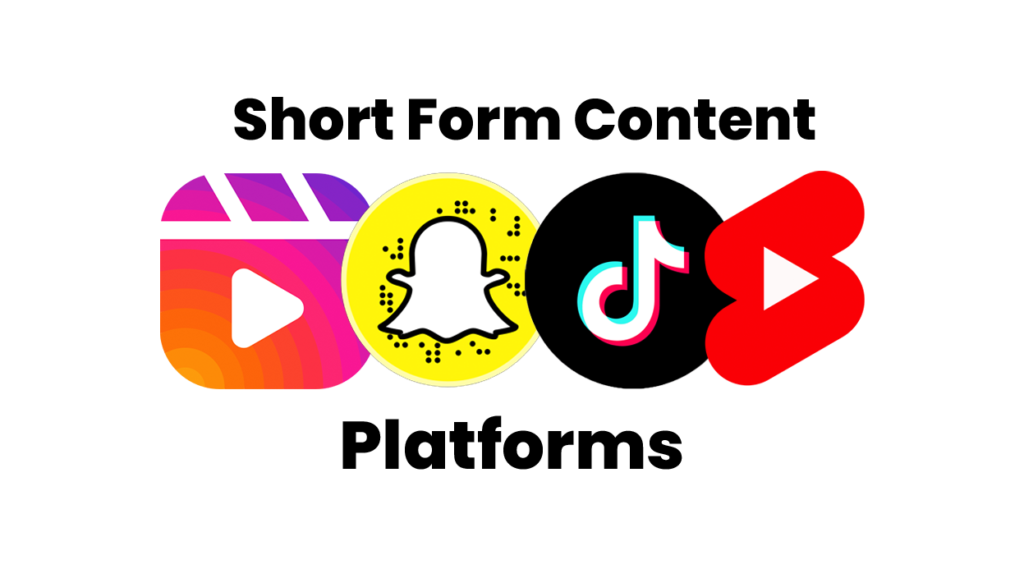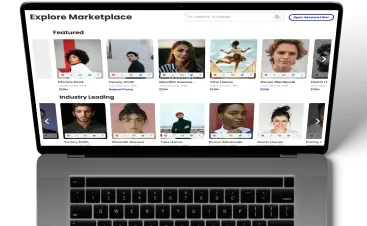The Rise of Short-Form Content across Social Media
Over the past year, we’ve seen the rise of short-form content. With TikTok’s worldwide success dominating screen time and user viewership, competing platforms have rushed to create functionality that mimicked the endless short form vertical video scroll habit. We saw the adoption of this across the Meta platforms with Instagram Reels and Facebook Reels, Snapchat introduced their Snapchat Spotlight feature, and then YouTube’s stake in the game with YouTube Shorts.
YouTube Shorts has had great success attracting viewers and winning back screen time in the race for user scroll-time. The platform is reporting an attraction of 1.5 billion monthly viewers to the short-form Shorts part of the YouTube platform. Allowing for creators to have an additional set of videos on their YouTube page that is meant for quick consumption and faster virality, this feature opens the door for a whole new way for creators to utilize YouTube.
Creators will still prioritize generating revenue through deals and collaborations with brands, but now there are more opportunities for passive income to be generated on their existing short-form content.

Monetization Now Available on YouTube Shorts
Starting February 1st, YouTube has allowed creators to monetize their Shorts content. This can be done through the YouTube Partner Program, working similarly to how creators can monetize their main channel content by integrating ads into their videos.
In order to join the YouTube Partner Program, a creator must meet one of the following requirements:
-
1,000+ subscribers on their channel
-
4,000 public watch hours in the last 12 months
-
10 million accumulative public Shorts views in the last 90 days
The move towards incentivizing creators to create unique and engaging content on the YouTube Shorts platform is a great step for YouTube in supporting the creator economy. Short-form content is easy to watch, keeps viewers engaged, and allows creators to easily stay quick on their feet in the content creation process in order to be on top of trends without the lengthy editing and post-production process that came with traditional YouTube video creation.
We spoke with Creator Edwin Meza who has generated over 250 million views on his short form content across his social media channels. In preparation for the expansion of YouTube Shorts, Edwin has create channels where he is just publishing short form content in a variety of formats to see what works best with the growing algorithms.
YouTube short’s monetization update puts it years ahead of any competing platform’s payment structure
This is the year of the first YouTube shorts millionaire, which is insane to say.
How to Start Monetizing YouTube Shorts
There is a quick process that creators must go through in order to set their channel up to be able to monetize YouTube Shorts. Each application is reviewed by YouTube to ensure that users are upholding community guidelines.
If you are on a computer follow these steps:
- Sign in to YouTube
- In the top right, click your profile picture
YouTube Studio
- In the left menu, click Earn
- Click Start to review and Accept Base terms
- Click Start to set up an AdSense account, or link an existing active one
Once done, you’ll see In Progress in the Get Reviewed step, which means YouTube has your application!
If you are on a mobile device follow these steps:
- Open the YouTube Studio app
- From the bottom menu, tap Earn
- Click Start to review and Accept Base terms
- Click Start to set up an AdSense account, or link an existing active one
How Much YouTube Creators Make
When watching YouTube videos, people often wonder how YouTube creators generate income. Outside of traditional brand deals, YouTube splits a percentage of the revenue they make from advertisers and delivers it to creators once viewers watch the ads integrated into their videos. The funds are accessible to the creator through the YouTube Partner Program network, which can be found within the YouTube channel settings.
According to a January 2023 report, The average YouTube pay in the U.S. in 2022 was about $1,154 per week or $4,616 monthly. Creators earn about 55% of the revenue on their channels — for every $100 an advertiser pays, Google pays $55 to the creator. The average YouTuber makes about $0.18 per view or $18 per 1,000 views.
Prior to last year, the ten highest-earning YouTubers in 2021 collectively made about $300 million, up 40% from 2020.
How Creators Can Get Started on YouTube Shorts
Shorts are a great way for creators to start making short-form content additional to their TikTok and Instagram Reel videos. It can even act as a place for creators to test content that did or did not perform well on other platforms and see if the YouTube Short audience resonates with it similarly.
By creating short form content that is meant to reach a wider audience, we suggest publishing videos across TikTok, Instagram Reels, and YouTube Shorts. This way, you can harness a larger community and audience by growing your following across all of the main social media platforms. Keep an eye on which trends are performing best on each platform and create content that follows those trends while adding your own unique twist to it. Growing your following and average view count will help you generate more brand deals and collaborations. This way, you can brand yourself to a wider audience.
To create a YouTube Short, simply press the “Create” button in the top right on your channel and upload a short form video (under 1 minute). YouTube will automatically turn this into a Short.
If you are on a mobile device, press the “Shorts” button in the middle of the home page navigation and press “Create”.
How Brands Can Get Started on YouTube Shorts
Brands need to be more aware of the ever-shortening attention span of viewers. No longer will a minute-long high production video suffice as an effective ad. Rather, brands are seeing the best results when they are working directly with creators to integrate their product into short form videos in the form of a brand deal. If the creator can create authentic content centered around your product or service, it can be perceived better by the creator’s audience.
At Glewee, we suggest that every brand creates, maintains, and prioritizes having an Instagram, TikTok, and YouTube Shorts account. By working with creators to generate UGC (User Generated Content), brands can publish this content across all of their social media channels to build their following, connect further with their ideal customer, and grow their brand awareness. Brands can easily connect with industry leading creators that are setting the stage for the next viral trends on YouTube Shorts through Glewee. Utilizing YouTube Shorts by regularly publishing content to the platform is a great way to grow your brand in a new platform, opens the door for new trends to participate in, and can increase your customer base.
When creating paid advertisements for YouTube Shorts, think about how you can hook a viewer in within 2-5 seconds. If a viewer is not engaged in that time, they will quickly swipe to the next video. There are many ways for brands to capitalize on the rise of short-form content. This is going to require working in faster creative cycles and minimizing the amount of effort that has traditionally been put in to produce industry standard creative. Put yourself in the mind of your ideal customer who is scrolling through these social media platforms. Now, think about how short of a timeframe you have to catch their attention!





